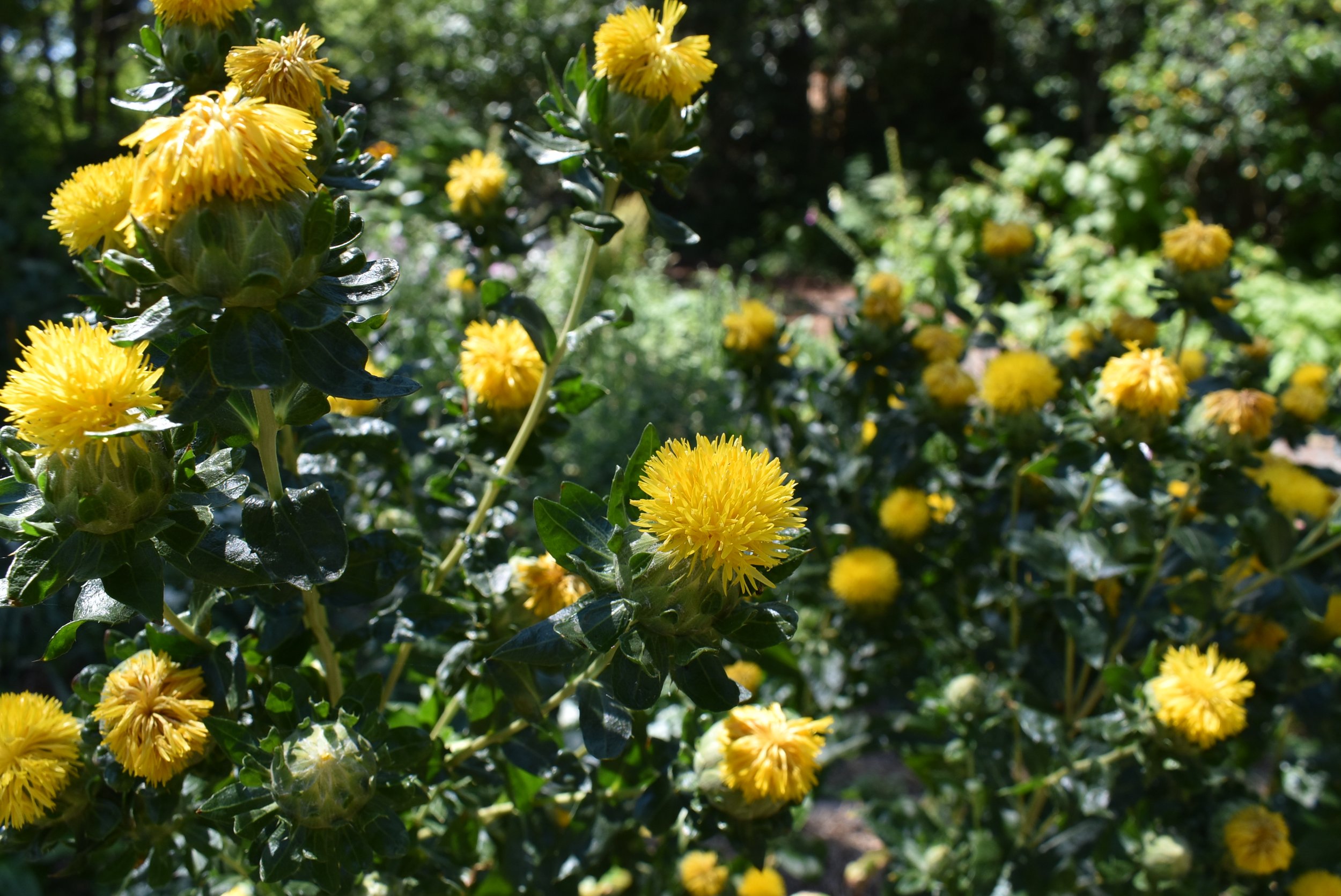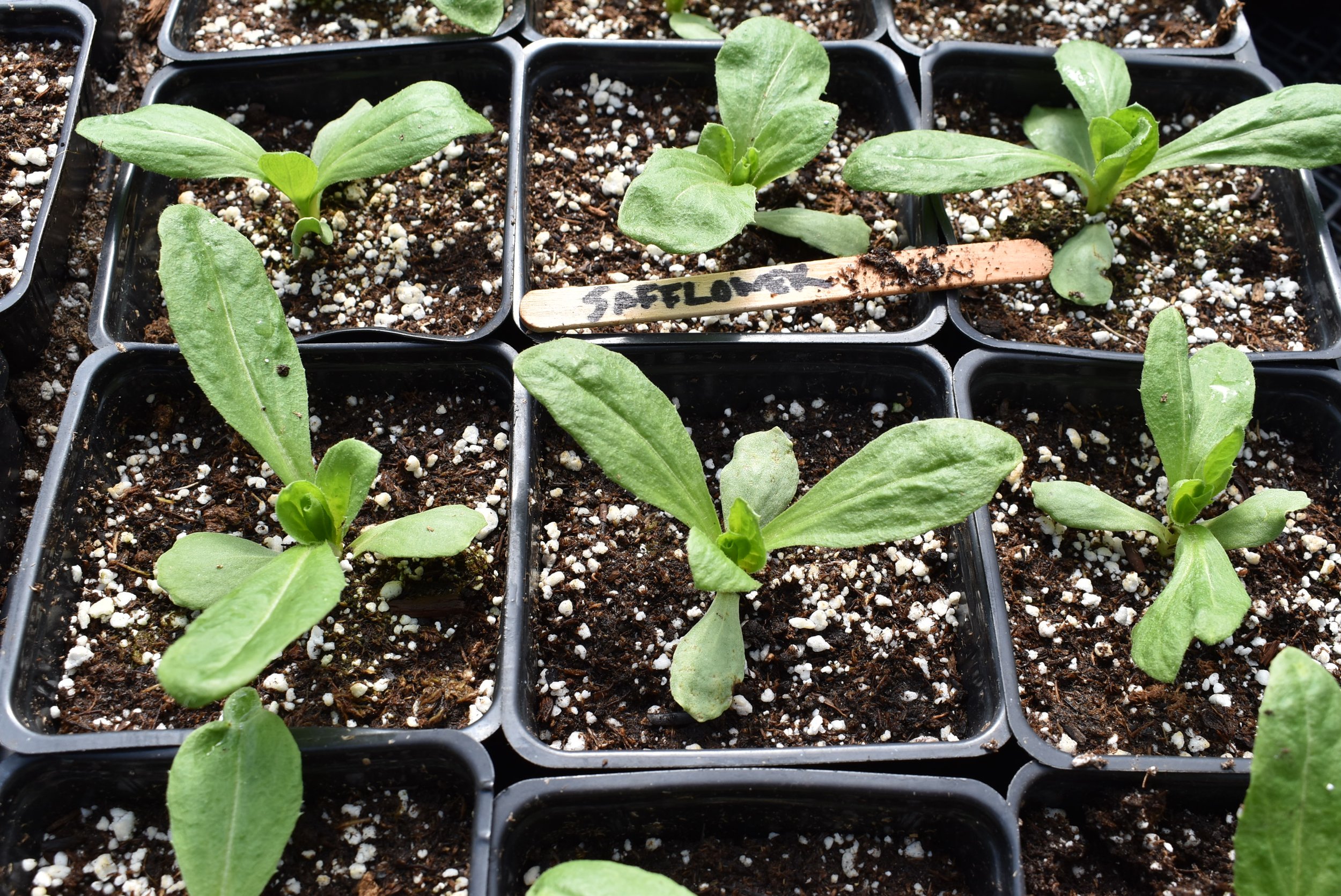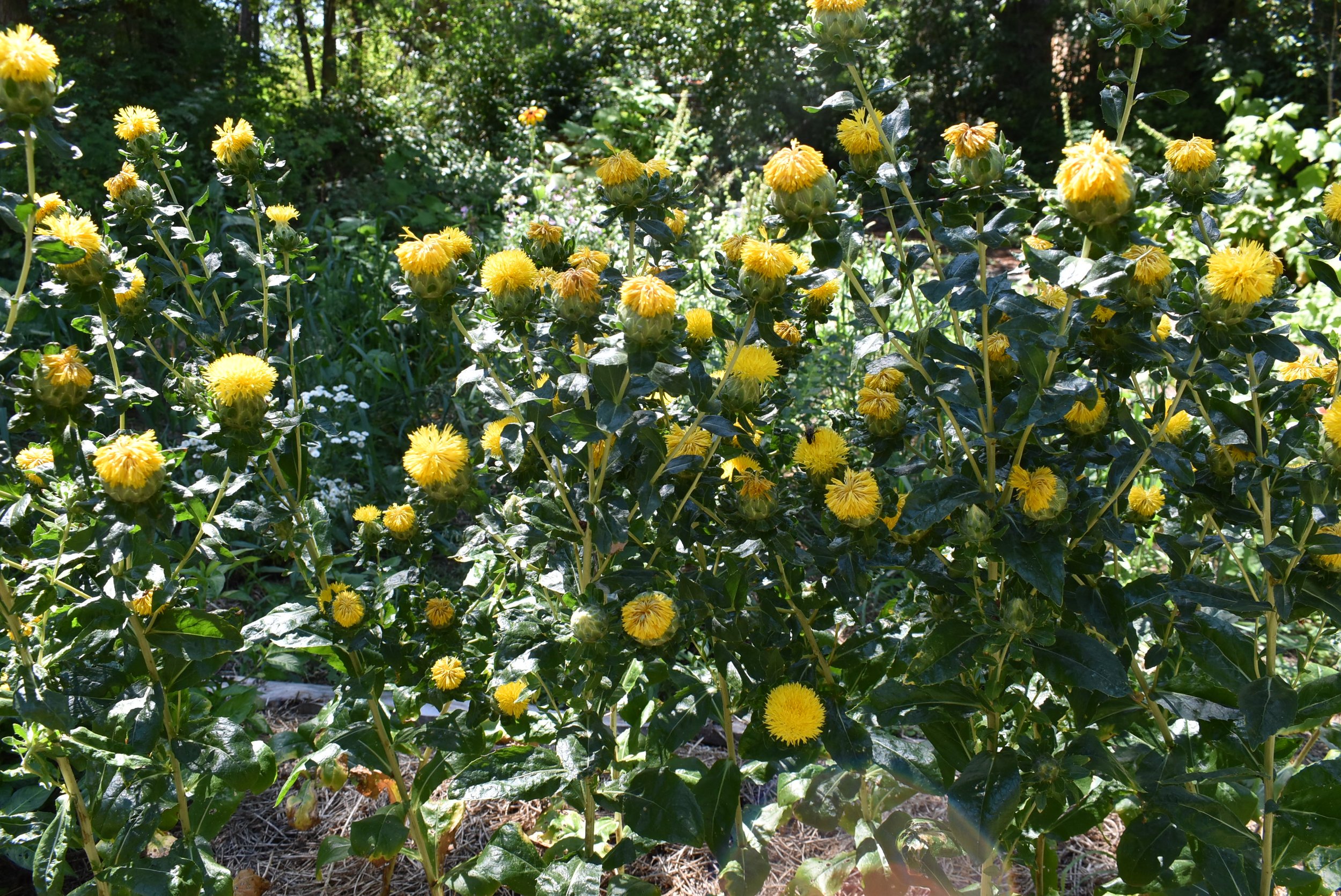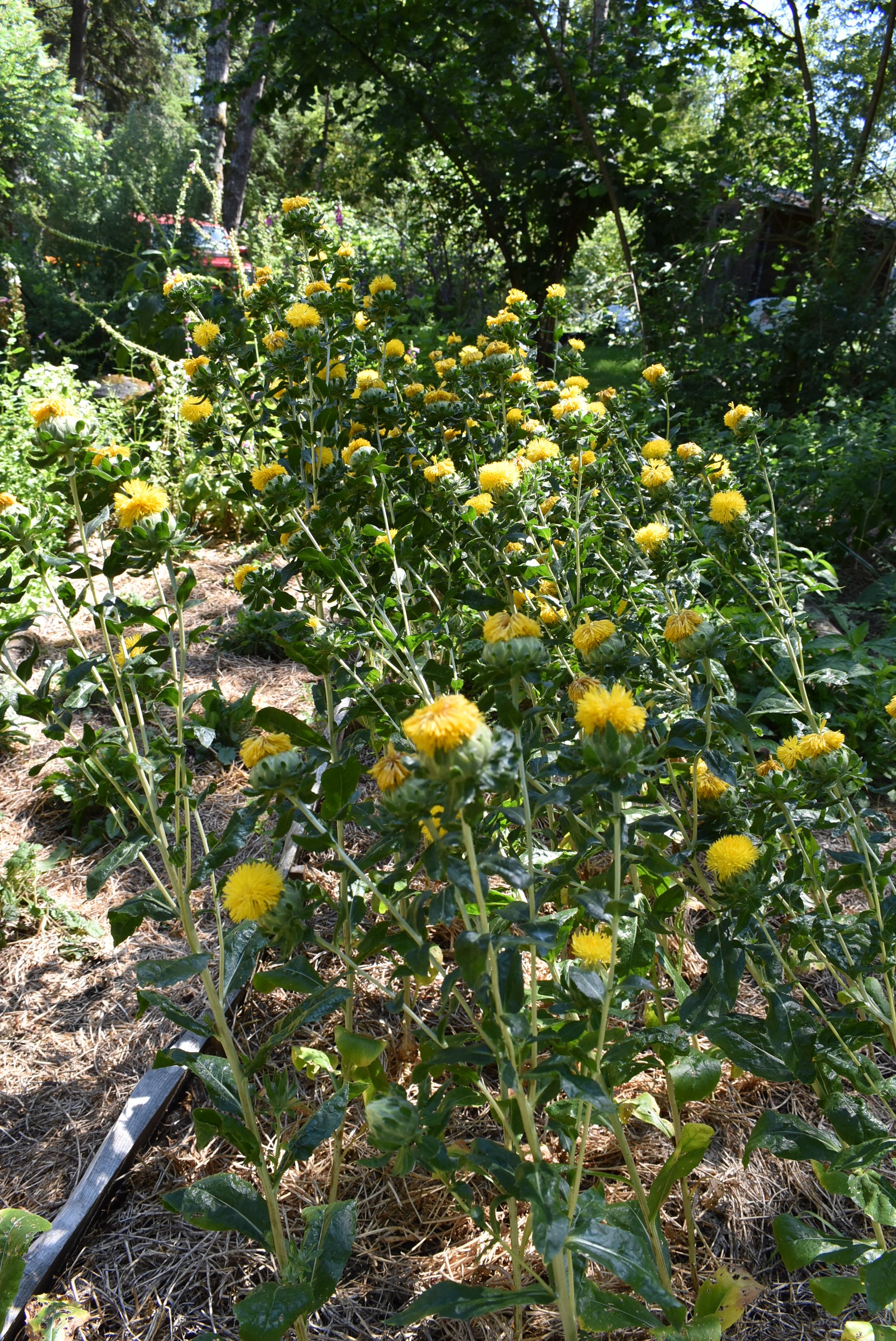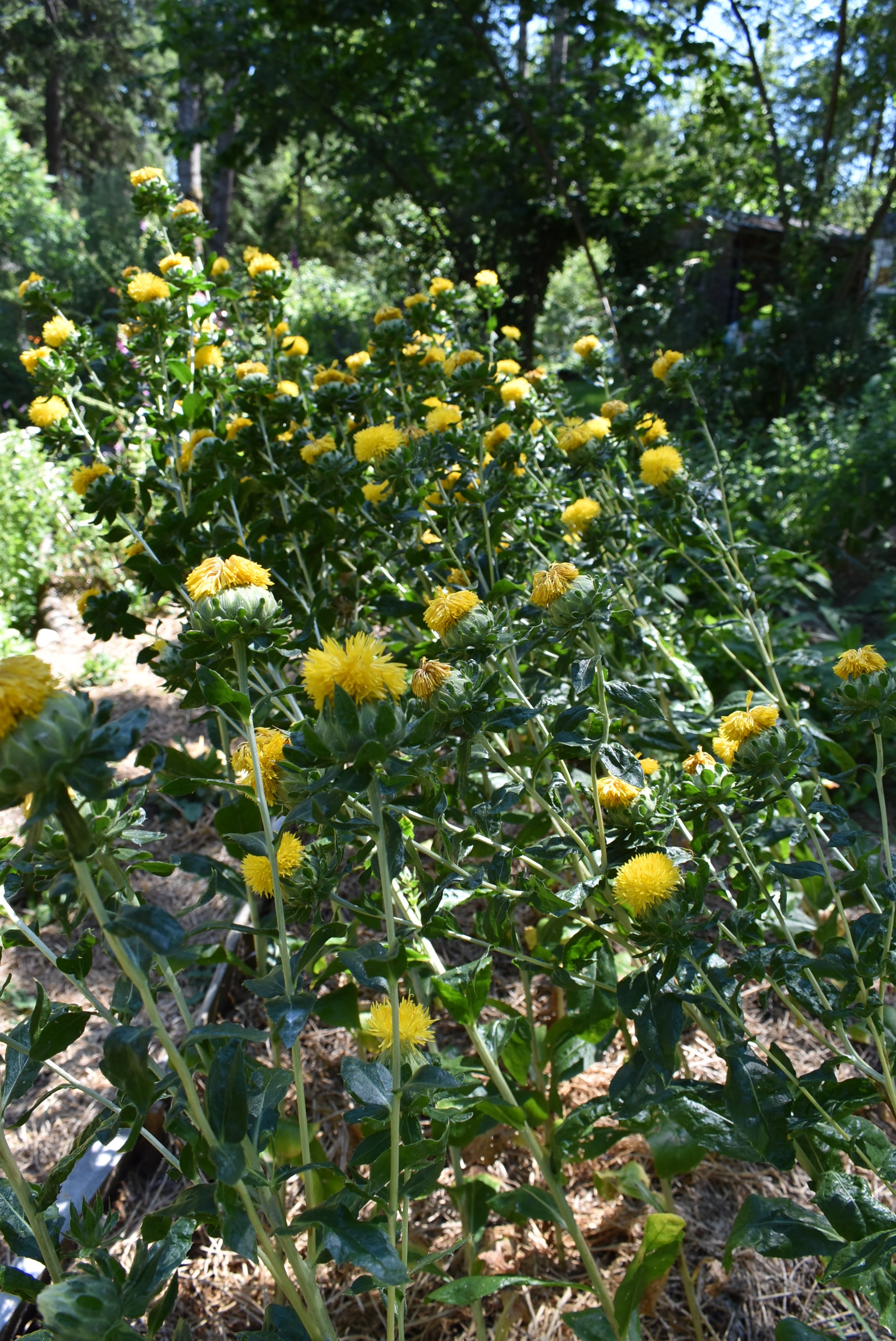Common Names
Safflower, Dyer’s Saffron, False Saffron
Botanical Name
Carthamus tinctorius
Plant Family
Asteraceae (Daisy Family)
Native Range
Turkey, Iran.
Life Cycle
Annual
Hardiness Zone
2-11
Habit
Plants grow 2-3ft tall and about a 1ft or so wide. Bright yellow, or orange, flowers are tufted and thistle-like, and contain about large oil-rich seeds. The flowers bloom mid summer through early fall.
Sun/Soil
Full sun to part shade. Very drought tolerant.
Germination/Sowing
Seeds germinate easily and are best direct sown in mid to late spring. They can also be started in pots in spring, but due to the large taproot, they don’t do well in pots and you’ll need to transplant them in a timely way to prevent stunting.
Growing/Care
The plants are drought tolerant and require no maintenance.
Harvesting
The flowers can be harvested as they open for use in teas, or as false saffron. The seeds are harvested once the flowers have finished and the seed pods are dry and brown.
Culinary Uses
The flower petals are used as a type of saffron, and the seeds are pressed to make veggie oil.
Medicinal Uses
Safflower flowers are used to promote circulation and help with pain, and menstrual irregularities.
Other Uses
The flowers produce orange and yellow dyes used in textiles.
Safflower is commonly grown as a cut flower for use in fresh and dried arrangements. Though not particularly showy on its own the thistle-like flowers add interest and texture, as do the unopened flower buds, and seed pods.
Themes
Apothecary Garden, Low Maintenance, Deer Resistant, Attracts Pollinators, Cut Flowers, Dried Flower Arrangements, Dye Plant
